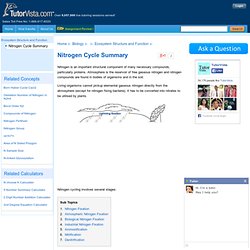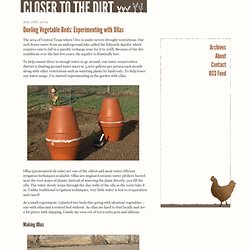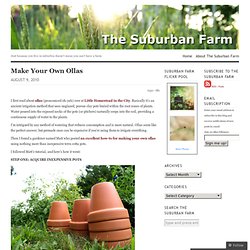

Welcome to APS. Soil and Health Library. Nitrogen Cycle Summary. Nitrogen is an important structural component of many necessary compounds, particularly proteins.

How To Use Pee In Your Garden. If you can get over the ewwww factor, pee-cycling your own urine into the garden makes good sense.

Fresh urine is high in nitrogen, moderate in phosphorus and low in potassium and can act as an excellent high-nitrogen liquid fertilizer or as a compost accelerator. Components of Urine The exact breakdown of urine varies depending on the diet of the pee-maker. The more protein a person consumes, the more nitrogen will be excreted into the urine. Typical Western Diet pee has an NPK ratio of about 11-1-2.
Urine also contains salt – sometimes quite a lot of it if you are hopped up on a diet of canned soup and french fries. Keep in mind that areas with a lot of rain (Seattle!) Fresh pee can have a pH anywhere from 5 to 9 depending on a person’s diet, but it tends to move toward neutral as it ages and breaks down when applied outside. Safety Issues. Plant Nutrient Deficiency Database (NutDef) The Complete Guide to Sick Plants, pH and Pest troubles! Marijuana Garden Saver: AKA The Complete guide to Sick Plants,pH, and Pest troubles!

I have put a lot of work into this for those who need it when I'm not around This thread has been updated 7/15/2010 All updates are in RED. Scroll down to the bottom for most of the updated stuff. If you need help please DO NOT post in this thread. Make a thread in the infirmary, or post in the link below if you need my help with something.Split From: The Complete Gude to Sick Plants,pH and Pest Troubles When you do post please give as much detailed information as possible to faster get your diagnosis.
Questions provided by CannaGod from PLanetGanja and 10K from ICMAG *NOTE: Please Cut And Paste only the section that applies and add your response. How long has this problem been going on? HYDROPONICS/Aero Ponics/Coco/Soiless/ How long has this problem been going on? I have been doing a lot of research on sick plants and also helping out others a lot on sick plants! Nitrogen (N) Mobile Element and Macro Element. Diagnosis Of Mineral Deficiencies In Plants By Visual Symptoms - Wallace, 1943. The processes concerned in the growth of plants are the subjects of study by plant physiologists and plant biochemists.

A comprehensive account of these processes is outside the scope of the present work, the special object of which is to deal with the outward and visible signs of imperfections in the plant's activities caused by faulty mineral nutrition. Nevertheless it is useful to have before us the general features of the main processes involved and to realize that the symptoms we shall be discussing later have a physiological basis, and are not direct and unchangeable signs of the specific deficiencies but result from the derangement of the complicated mechanism of the plant's vital activities.
The main processes involved in plant development may be summarized as follows: Absorption: Intake of water and mineral elements by the root system. With all plants there are well defined seasonal growth cycles. Major elements: Nitrogen, phosphorus, calcium, magnesium, potassium, sulfur. Experimenting With Ollas. May 28th, 2009 The area of Central Texas where I live is under severe drought restrictions.

Our well draws water from an underground lake called the Edwards Aquifer which requires rain to fall in a specific recharge zone for it to refill. Make Your Own Ollas. I first read about ollas (pronounced oh-yah) over at Little Homestead in the City.

Basically it’s an ancient irrigation method that uses unglazed, porous clay pots buried within the root zones of plants. Water poured into the exposed necks of the pots (or pitchers) naturally seeps into the soil, providing a continuous supply of water to the plants. I’m intrigued by any method of watering that reduces consumption and is more natural. Ollas seem like the perfect answer, but premade ones can be expensive if you’re using them to irrigate everything. Then I found a gardener named Matt who posted an excellent how-to for making your own ollas using nothing more than inexpensive terra cotta pots.
I followed Matt’s tutorial, and here’s how it went: This time of year they’re easy to find, and I bought these 15-inch pots for $1 each at Job Lot. Global Buckets: Olla Irrigation (Clay Pot System) We've been inspired by Fan Sheng-chih Shu.

His writings from the first century BC describe a method of irrigation where a unglazed clay pot is buried in the soil. When filled with water the clay pot turns into an amazing high-tech device. Online Tool For Diagnosing Tomato Problems. Posted on 01 July 2008 by tomatocasual.com By Michelle Fabio A world free of tomato-growing problems would be perfect indeed, but Tomato Casual has found a fabulous online tool for when your leaves show brown spots with yellow halos or the blossom ends of your tomatoes turn black.

The Tomato Problem Solver from the Aggie Horticulture team at Texas A & M can help you diagnose and treat your tomato growing difficulties. From the home page of the user-friendly Tomato Problem Solver, you can choose a general tomato disorder from the choices: Green Fruit, Ripe Fruit, Leaf, Stem, and Root. From there are you taken to a series of photos that show the most common problems tomato growers encounter.
Remineralize The Earth. Soil. Soil.